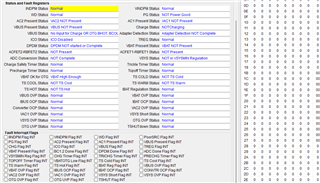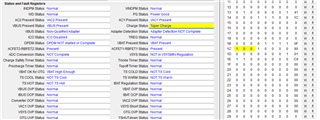Other Parts Discussed in Thread: TPS25751, CSD87501L, , BQSTUDIO, LM74700-Q1, EV2400, TPS2121
Tool/software:
Hello TI team,
I'm using the BQ25798RQMR in a dual-input configuration with VAC1 connected to an external 20V barrel jack ("PLUG") and VAC2 connected to the output of a TPS25751 PD controller (PPHV). My goal is to support power input from either source.
I'm seeing unexpected behavior: when I plug in USB-C only (VAC2 = 20V confirmed), Q2 does not turn on and the system (SYS) remains unpowered. ACDRV2 stays low and REGN is also 0V. I have verified the following:
-
TS pin is connected via a divider to REGN and GND (R35 = 10kΩ, R36 = 4.7kΩ), which normally yields ~1.9V when REGN is up.
-
VAC2 = 20V from TPS25751 (confirmed)
-
VAC1 is floating (nothing plugged into PLUG)
-
Q2 is a back-to-back CSD87501L controlled by ACDRV2
My understanding is that REGN should come up when BQ25798 detects a valid input and TS voltage. But it seems we’re in a cold-start deadlock:
-
REGN is off → TS = 0V → ACDRV2 is off → Q2 is off → no power reaches SYS → REGN stays off.
I've attached the relevant schematic for your reference.
Thanks in advance for your help!







